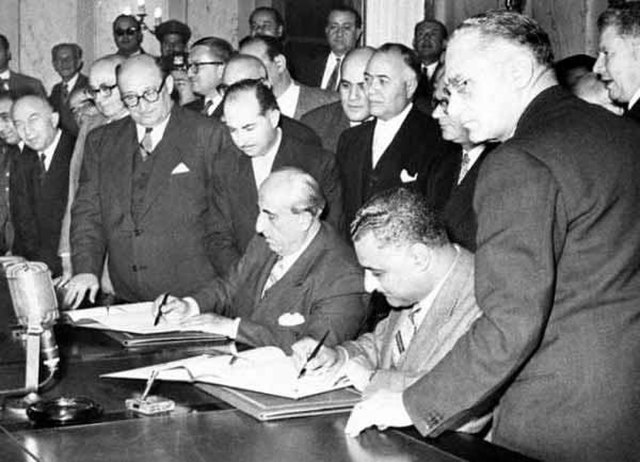Member states of the United Nations
The member states of the United Nations comprise 193 sovereign states. The United Nations (UN) is the world's largest intergovernmental organization. All members have equal representation in the UN General Assembly.
Flags of the member states of the United Nations, in front of the Palace of Nations (Geneva, Switzerland). Since 2015, the flags of the two observer states are raised alongside those of the 193 member states.
The presidency of Ma Ying-jeou saw the first participation of the Republic of China on a United Nations body in almost 40 years.
Egyptian president Gamal Abdel Nasser (seated right) and Syrian president Shukri al-Quwatli sign the accord to form the United Arab Republic in 1958. The political union briefly represented both states and was used as the name of Egypt following Syria's withdrawal in 1961.
Indonesian president Sukarno's withdrawal in 1965 was the only time a UN member attempted to withdraw; it rejoined a year later.
The United Nations (UN) is a diplomatic and political international organization whose stated purposes are to maintain international peace and security, develop friendly relations among nations, achieve international cooperation, and serve as a centre for harmonizing the actions of nations. It is the world's largest international organization. The UN is headquartered in New York City, and the UN has other offices in Geneva, Nairobi, Vienna, and The Hague, where the International Court of Justice is headquartered at the Peace Palace.
1943 sketch by Franklin Roosevelt of the UN original three branches: The Four Policemen, an executive branch, and an international assembly of forty UN member states
Dag Hammarskjöld was a particularly active secretary-general from 1953 until he died in 1961.
Kofi Annan, secretary-general from 1997 to 2006
Flags of member nations at the United Nations Headquarters, seen in 2007








